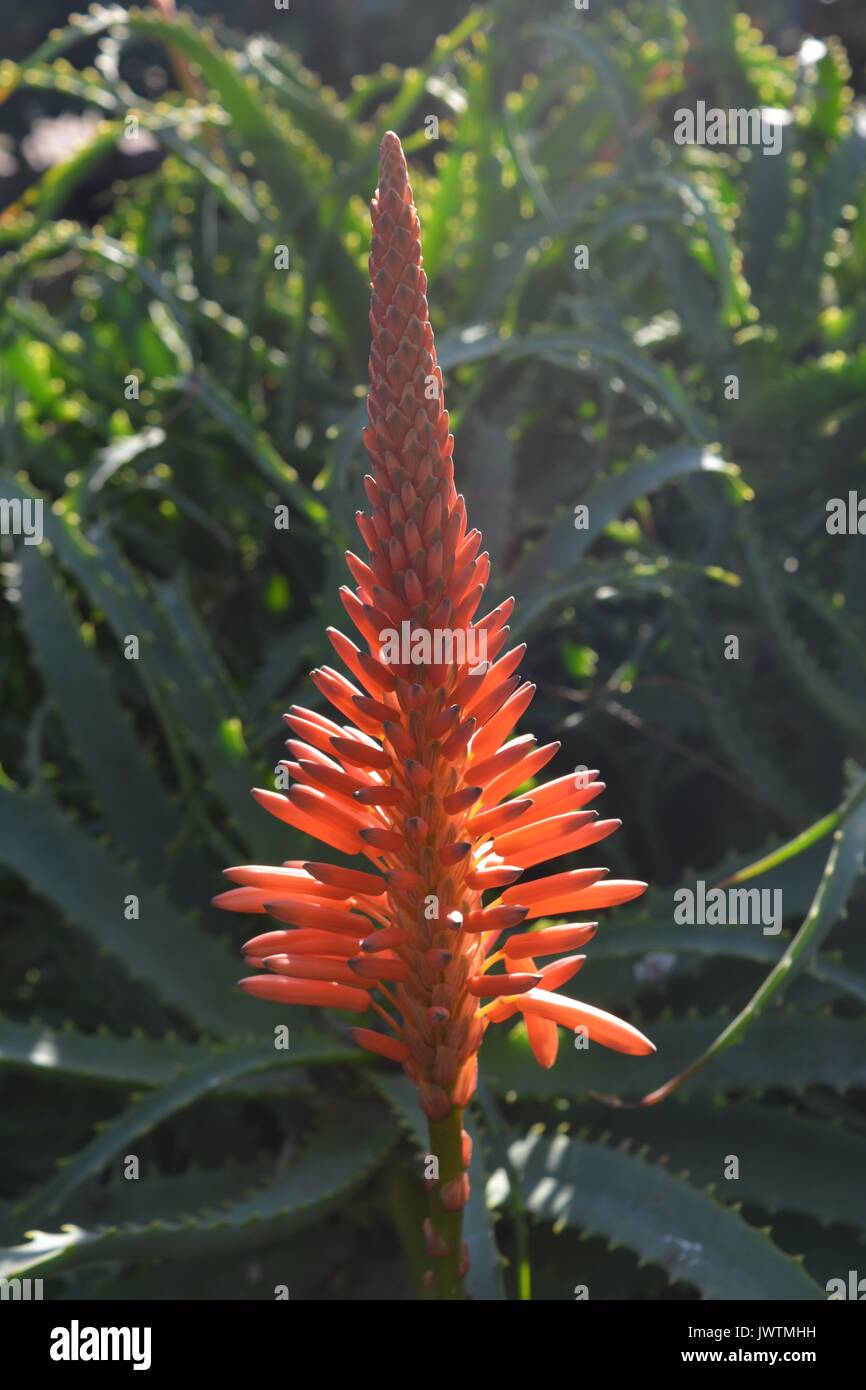| Kniphofia uvaria | |
|---|---|
| Scientific classification | |
| Kingdom: | Plantae |
| Clade: | Tracheophytes |
| Clade: | Angiosperms |
| Clade: | Monocots |
| Order: | Asparagales |
| Family: | Asphodelaceae |
| Subfamily: | Asphodeloideae |
| Genus: | Kniphofia |
| Species: | |
| Binomial name | |
| Kniphofia uvaria | |
Red Aloe Vera

Kniphofia uvaria is a species of flowering plant in the family Asphodelaceae, also known as tritomea, torch lily, or red hot poker, due to the shape and color of its inflorescence. The leaves are reminiscent of a lily, and the flowerhead can reach up to 1.52 m (5.0 ft) in height. There are many varieties of torch lily, and they bloom at different times during the growing season. The flowers are red, orange, and yellow.
Jun 20, 2013 Aloe Vera (Red Hot Poker) Aloe vera. Tweet; Description: Aloe vera belongs to the genus Aloe which contains about 500 species of flowering succulent plants. They belong to the family Xanthorrhoeaceae. The Aloe genus is native to Africa; species are found in southern Africa, the mountains of tropical Africa, various islands off the coast of. Aloes have been placed in various plant families; initially they were in the Liliaceae. Today taxonomists place them either in the Asphodelaceae (with asphodels and red hot pokers) or Aloaceae (with a few other related succulent genera).
Distribution[edit]
Kniphofia uvaria originates from the Cape Province of South Africa,[1] and has been introduced into many parts of the world, such as North America, Australia, New Zealand, Patagonia and Europe as a garden plant. It is hardy in zones 5-10.
In parts of south-eastern Australia, such as the Central and Southern Tablelands of New South Wales and southern Victoria, it has escaped cultivation and become naturalised.[1] It is now regarded as an environmental weed in these locations, spreading from former habitations into natural areas, where it can grow in thick clumps and threaten sensitive ecosystems. Elsewhere in southern Australia it is regarded as a potential environmental weed, and it may have also naturalised in parts of South Australia and California.[1]
References[edit]
- ^ abc'Factsheet: Red hot poker – Kniphofia uvaria'. Weeds of Australia: Biosecurity Queensland Edition. Queensland Government. 2011. Retrieved 10 February 2012.

- Pink, A. (2004). Gardening for the Million. published as an e-book by Project Gutenberg Literary Archive Foundation. This book only uses the name 'Tritoma'.
External links[edit]
| Wikimedia Commons has media related to Kniphofia uvaria. |
- Dressler, S.; Schmidt, M. & Zizka, G. (2014). 'Kniphofia uvaria'. African plants – a Photo Guide. Frankfurt/Main: Forschungsinstitut Senckenberg.

Aloe Vera Turning Red
Red Hot Pokers are flowering perennials that bloom in the summer with torch-shaped, bright, red, yellow and orange flowers. Sometimes called Torch Lilies, Red Hot Poker plants can grow up to 5 feet tall and 3 feet wide, and often used as border or specimen plants. Many varieties of Red Hot Pokers exist, with slightly different but always vibrant flower colors and different blooming times. Some varieties bloom in the late spring and early summer, some in mid-summer, and others in late summer and early autumn. Red Hot Poker plants grow best in USDA zones 5 through 9, where winter temperatures don’t drop below -15 degrees Fahrenheit.
Plant your Red Hot Pokers in a location with full sun and well-draining soil in the spring, after the soil has warmed up and all danger of frost has passed.
Water your Red Hot Poker plants deeply once or twice each week during the hot summer months. Water during the spring and early autumn only during dry spells.
Remove all spent flowers as soon as they fade to promote re-blooming of your Red Hot Poker plants.
Spread a 4-inch-thick layer of bark mulch around the Red Hot Poker plants in the fall to protect them through the cold winter months. Remove the mulch in the spring, after the last frost.
Aloe Vera Plant Red Tips
Cut away all the dead or damaged foliage from the Red Hot Poker plants in the early spring. You can also cut the plant down to its base in late fall.